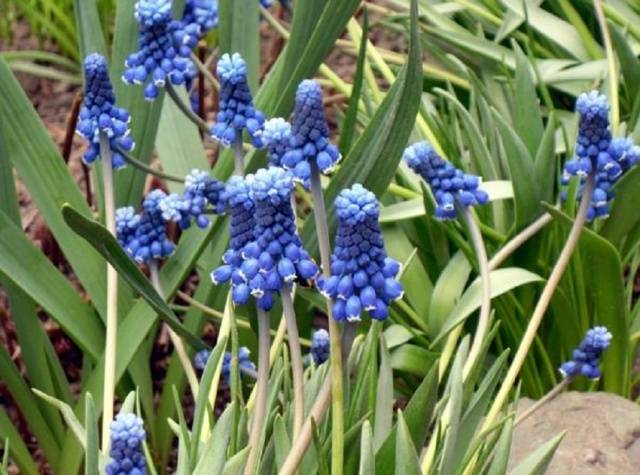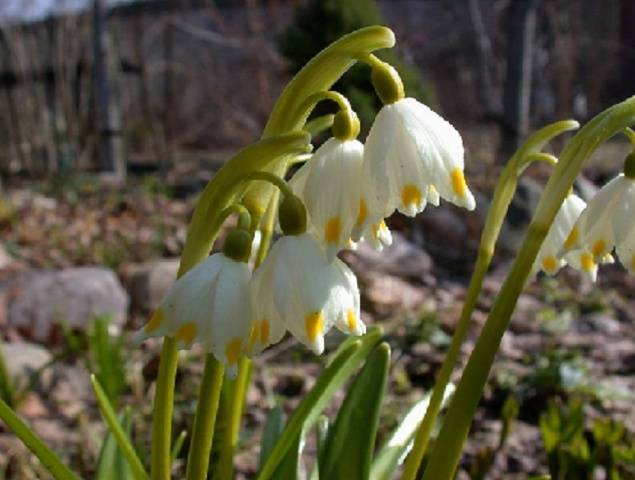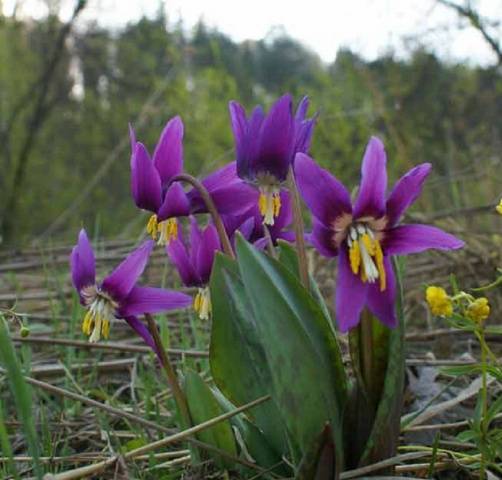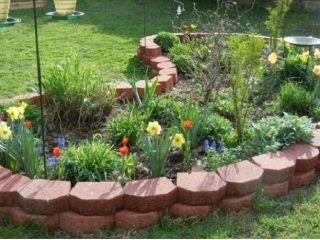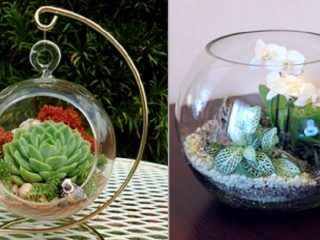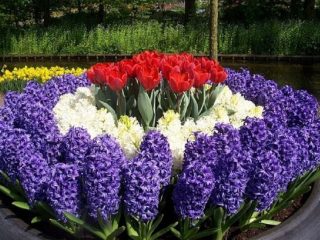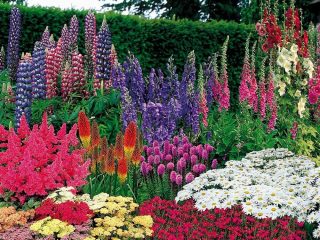Content
Not a single area is complete without primroses. In early spring, when the bulk of plants are just preparing to awaken, these little heralds of the end of the winter cold are pleasing to the eye. Therefore, every summer resident (even if not in the first year) must plant small-bulbous perennials.
They look good in any place, although many note the not too catchy colors of small-bulbous perennials and rapid wilting. But careful selection of varieties can greatly improve the situation. Pay attention to the flowering period, analyzing the climatic characteristics of your region. You can choose decent varieties of small-bulbous perennials with good resistance to weather changes.
Almost everyone loves small-bulbous perennials. The unsightly appearance of plants that is sometimes mentioned can be avoided if:
- Place a flower bed with small-bulbous perennials not too close to trees and shrubs. This technique will help provide plants with moisture in hot and dry weather.
- Avoid proximity to evergreens, in which the flower bed with small bulbous plants will be immersed in the shade.
- Place plantings on the lawn. In early spring, they will add amazing elegance to the green surface of the lawn.
Naturally, there are also nuances of growing small-bulbous perennials, knowledge of which will help decorate the site without problems.
Some features of primroses
Why are our favorite primroses called small-bulbous? Because their bulb is small, sometimes even very small. But this does not prevent them from growing and blooming, releasing the delicate aroma of spring. Before planting them in a permanent place, it should be borne in mind that small-bulbous perennials are good in groups. There is no need to plant them separately; a flowerbed of small-bulbous primroses looks more impressive.
The second feature of small-bulbous primroses is that almost all of them grow quickly and form a large number of baby bulbs. This makes it possible:
- Plant the bulbs loosely. Space is left between the plants so that the children do not feel crowded and do not require a quick transplant. The only negative is that in the first year, a flower bed with small-bulbous perennials will not be very lush.
- Opt for a tight fit. In this case, already in the first year we will get a dense flowering meadow, but after a year or two we will have to separate the plantings.
Another feature of small-onion plants is that they do not like arbitrary planting depths. The average value is 10 cm, but this is for adult bulbs. Children go deeper. It is better to focus on the standards for adult bulbs recommended for varieties:
- crocuses, pushkinias, muscari, kandyka - optimally 8 cm;
- galanthus (snowdrops), chionodoxes, proliska (scylla) - up to 10 cm;
- colchicum (colchicum), white flower - no more than 15 cm.
At the same time, you will have to take into account the characteristics of the soil and climatic conditions. Light soils allow the bulbs to be slightly deepened, heavy soils require a reduction in depth. But in cold winters and thin snow, the bulbs can freeze. In addition, small-bulbous perennials tend to go deeper on their own.
How to prepare bulbs of small-bulbous perennials for planting
First you need an inspection. Shrunken, limp bulbs are laid. Be sure to remove bulbs with visible spots, damage or large sprouts. For planting, take only elastic, dense bulbs with clean scales and, preferably, without sprouts. Experts recommend keeping them in a manganese solution, but this requirement is not considered mandatory.
The main characteristics of small-bulbous perennials that make them very common:
- Flowering period. Lasts 25 days from April to mid-May.
- Winter hardiness and belonging to perennial plants. Transplantation is recommended after 4-5 years of development in one place.
- Vegetative method of propagation.
- Transfer time. It is best to do this after flowering, when the leaves have not yet completely died off. The bulbs can be easily found and dug up without damage.
- Boarding time. For many types of small-bulbous perennials - immediately after digging. This applies to blueberries and snowdrops.
To select the types of small-bulbous perennials for your site, you should get to know the main representatives better.
We choose the best
Let's consider the popular types of small-bulbous perennials that summer residents are happy to grow on their plots.
Scylla (scilla)
At first, this flower was considered a resident of forest edges. But its unpretentiousness, beauty and rapid reproduction made it a welcome guest on the plots.
This small-bulbous perennial tolerates frost well, prefers shaded places, but can also be found in open places quite often. Blooms immediately after the snow melts, with blue or white flowers. The only and main requirement that the small small-bulbous perennial Scylla makes is sufficient soil moisture during the flowering period, but the water must be well absorbed.
It grows very quickly. Scilla reproduces equally well both by seeds and daughter bulbs. Therefore, sometimes it even requires control on the site. Looks great in rockeries, early flower beds, and alpine slides. Many summer residents create conditions for forcing flowers for holidays, for example, for the New Year. To do this, the bulb is placed in a planting pot with fertile soil mixture and drainage. Does not require special care. To improve the reproduction and flowering of blueberries, plants are fed with potassium and nitrogen fertilizers. Feed small-bulbous perennials in early spring before flowering. Transplantation is recommended after three years of growth in one place. The newly planted plant is loosened, mulched and watered.
Of particular note is the species of autumn scylla, which blooms in early August. Beautiful blue flowers with violet or violet-blue edges.
Erantis or Vesennik
Compared to scilla, it is a rarer plant for summer cottages.But the bright sunny color of the petals will break through the snow. This small-bulbous perennial easily tolerates even late snowfalls. Begins to bloom in March or early April. The period depends on climatic conditions. The plants are small (up to 10 cm), with small flowers (2 cm), but planted in a group, they look amazing. They can be planted as a monogroup, or they can be combined with other small-bulbous plants such as snowdrop or crocus. Requires light, nutritious soil, sufficiently moist and slightly alkaline. Tolerates shade, although it is very light-loving and does not like stagnant water.
Transplantation is recommended once every 4 years, the deadline is at the end of August.
Galanthus (snowdrop)
The most famous small-bulbous perennial in all regions. There are 18 natural species of galanthus, but flower growers chose two for cultivation on plots - snow-white and Elweiss. When decorating plots, snowdrops are planted on ridges, alpine hills, but in groups. Snowdrops bloom as soon as the snow begins to melt. Very unpretentious small-bulbous perennials that grow well even without care. Requires transplantation once every 5 years. They grow well in forest conditions, so moisture and cool soil conditions are suitable for them. You can feed galanthus in autumn and winter to nourish the bulbs. Snowdrops grow well even without nutrition, but when fed, the flowers will be larger and more beautiful, and the flowering period will increase.
The bulbs are planted at a distance of 6-7 cm and with a planting depth of up to 10 cm. They grow well in planting containers with drained soil (they do not tolerate flooding). The main requirement is weeding.Galanthus do not do well near weeds, which deprive them of nutrition and provide a haven for pests. And the second condition - do not cut off the green foliage. It should turn yellow and fade on its own.
Muscari (mousine hyacinth)
It attracts with its unpretentiousness and ability to reproduce quickly. There are a lot of species, they differ in flowering times. You can select the types of small-bulbous perennials so that muscari pleases with its flowering longer. Among the features it is worth highlighting:
- does not like fertilizing with mineral fertilizers, but responds well to organic matter;
- planting shelter is not required; it tolerates cold very well;
- Requires replanting of overgrown nests every three years;
- does not like getting wet, the soil must be permeable.
Otherwise, the plant grows exactly the same in sunny areas and in the shade. Advice! It is good to combine muscari with other plants that can cover the early fading foliage of the small-bulbous perennial.
Bright blue flowers go well with daffodils, yellow tulips, and forsythia. Muscari with white, blue and yellow flowers will help decorate the pond in the area.
Iris reticulum (iridodictium)
Amazingly beautiful small-bulbous perennial. The height of the plant is no more than 10 cm, but this does not prevent it from being very attractive.
This is an ephemeral plant, so try to cover it with other flowers during the period of dying leaves. Reticulated irises are planted on lawns, in rocky gardens, in containers for moving to the desired corners of the garden. Planted in the garden in early autumn. Iris reticulum gives not only wonderfully colored flowers, but also a delicate aroma.It is better to plant plants in groups. Caring for small-bulbous perennials of this species is identical to caring for tulips. They respond well to sunny places, nutritious soil, and regular moisture from the moment of budding. Do not like:
- damp cold areas;
- excess moisture (may hurt).
They tolerate frosts well. The first transplant is carried out 4-6 years after planting. The bulbs need to be dried for 2-3 weeks in a warm place (+25º) and without light. Planted in autumn to a depth of 4 to 8 cm, depending on the size of the bulb.
A great addition to the list would be crocuses,
Pushkinia,
white flower,
kandyk from the lily group,
who will win your love from the first meeting.
Conclusion
Try to start by decorating a small flower bed with delicate primroses in your country house. You will immediately notice how they decorate and improve the area. These little bulbs will become your favorite plants, blooming in the first days of spring even under the snow.








